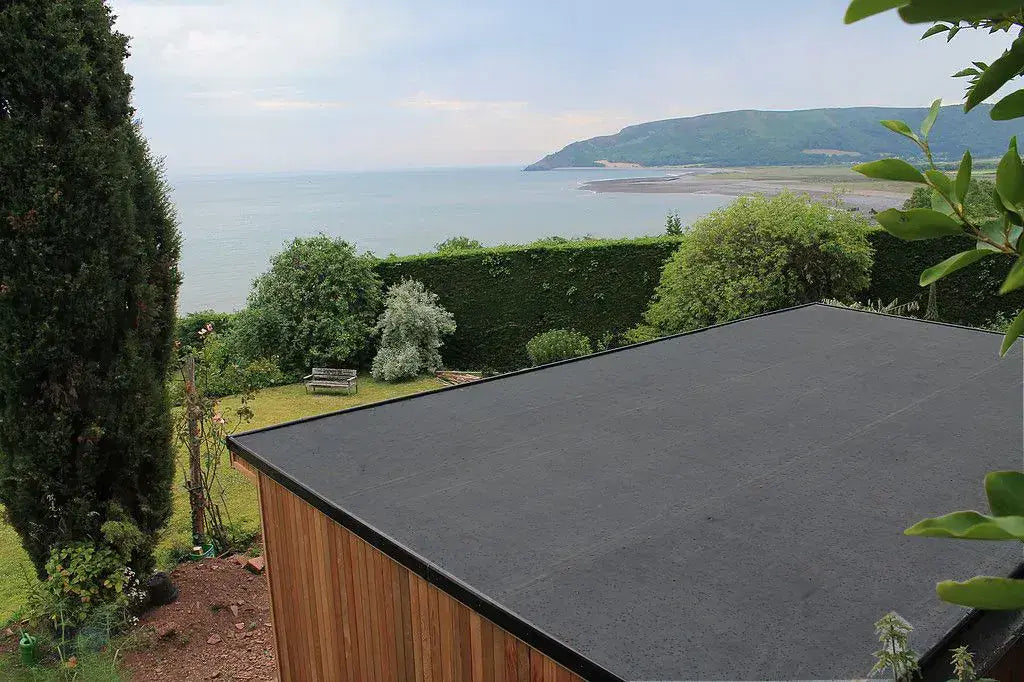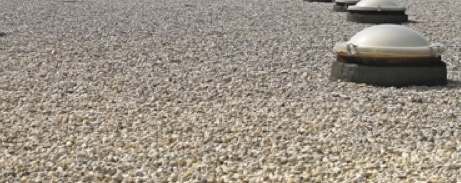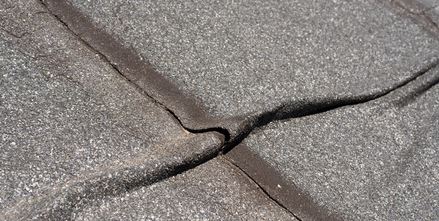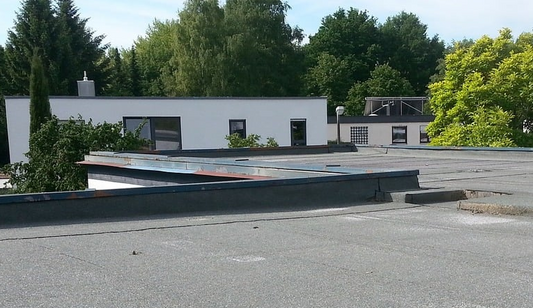The most common EPDM roofing mistakes include inadequate surface preparation, poor seam sealing, improper flashing installation, disregarding weather conditions, and careless membrane handling.
You'll avoid these errors by thoroughly cleaning substrates, applying correct sealing pressure, extending flashing 6+ inches up vertical surfaces, installing during moderate weather, and preventing membrane contamination or tears. Proper installation techniques can extend your rubber roof's lifespan by 10-15 years and prevent costly water damage down the line.
Key Points
- Poor surface preparation prevents proper adhesion, so clean substrates thoroughly and remove all debris, oil, and contaminants.
- Inadequate seam sealing creates water infiltration pathways; use quality materials and apply sufficient pressure during installation.
- Flashing failures around penetrations cause leaks; extend flashing at least 6 inches up vertical surfaces and secure per manufacturer specifications.
- Installing during adverse weather conditions compromises adhesive performance; schedule work during moderate temperatures for optimal results.
- Improper membrane handling leads to tears and contamination; avoid dragging across rough surfaces and store at appropriate temperatures.

Surface Preparation Blunders That Compromise Adhesion
When installing EPDM roofing systems, proper surface preparation serves as the foundation for successful adhesion and long-term performance. You'll greatly reduce your roof's lifespan if you neglect to guarantee a clean substrate that's free from debris, oil, and other contaminants that interfere with adhesive bonding.
Don't overlook uneven surfaces—they're silent destroyers of EPDM membrane integrity. Any irregularities must be smoothed before application to prevent adhesion issues later.
Always conduct a thorough pre-installation inspection to identify potential problems requiring correction. For best results, apply manufacturer-recommended primers to enhance bond strength.
Remember that rushing through surface preparation compromises proper installation and ultimately leads to leaks and premature roof failure. The extra time invested in preparing your substrate properly pays dividends in extended performance.

Seam Sealing Errors and Their Long-Term Consequences
Proper surface preparation sets the stage for success, but even the most meticulously prepared substrate won't prevent failure if you botch the seam sealing process.
Seam sealing errors create pathways for water infiltration, resulting in leaks that compromise your roof's structural integrity and lead to costly repairs.
Poorly sealed seams invite water damage, threatening your roof's integrity and your wallet's well-being.
The primary culprits behind these failures are low-quality materials and insufficient pressure during installation. Your roofing system may fail within just a few years if adhesives aren't properly applied.
More concerning, improper installation can reduce the lifespan of your roof by 10-15 years.
Implement regular inspections to catch potential issues early.
Training your installation team in proper techniques and investing in high-quality materials will greatly reduce seam-related problems, ensuring a more durable, reliable EPDM roof membrane that performs as expected.
Flashing Installation Failures Around Roof Penetrations

Roof penetrations represent the most vulnerable points in any EPDM installation, where even minor flashing errors can lead to catastrophic system failure.
Improper sealing around vent pipes and chimneys frequently results in water intrusion that can damage your building's interior and compromise structural integrity.
To avoid these issues, you'll need high-quality flashing materials that extend at least 6 inches up vertical surfaces and 4 inches onto the roof membrane.
Confirm proper overlapping and secure all components according to manufacturer specifications. Incorporate flashing tape as an additional waterproofing measure—it greatly enhances protection at these critical junctions.
Don't neglect regular inspections of your roof penetrations.
Check for cracks, rust, or corrosion in flashing installations. Identifying problems early prevents minor leaks around penetrations from developing into costly repairs and extends your EPDM roof's service life.
Temperature and Weather Considerations During Application
The success of your EPDM roofing installation depends critically on weather conditions during application, as temperature extremes can compromise adhesive performance and membrane flexibility.
Never attempt installation during heavy rain, high winds, or severe temperatures that can prevent proper bonding.
In cold conditions, both your adhesive and EPDM membrane must be maintained at workable temperatures to guarantee adequate adhesion.
Remember that curing times extend considerably in lower temperatures, potentially delaying project completion.
High humidity presents another challenge, as moisture entrapment between the membrane and substrate can weaken bonds and lead to premature seam failures.
For best results, schedule your roofing installation during moderate weather conditions—avoiding extreme heat, cold, or humidity that might compromise the integrity of your finished roof system.
(Related: Does EPDM need to be glued down?)
Membrane Handling Mishaps That Lead to Premature Failure
While weather conditions set the stage for successful installation, how you handle the EPDM membrane itself can make or break your roofing project. Improper handling creates vulnerabilities that compromise roofing system integrity long before the membrane serves its purpose.
| Handling Mistake | Consequence |
|---|---|
| Dragging across rough surfaces | Tears or punctures that create leak points |
| Storage in extreme temperatures | Membrane creasing and deformation |
| Contamination with debris | Poor adhesive bonding and eventual leaks |
| Allowing folds during transport | Creation of weak points leading to premature failure |
Never underestimate the importance of proper care during transport and site handling. Keep membranes clean, avoid sharp objects, prevent creasing, and always lift rather than drag sheets. These precautions prevent damage that would otherwise compromise your installation's longevity.
Rounding Up
By avoiding these common EPDM installation mistakes, you'll guarantee your roofing system performs as specified. Proper surface preparation, meticulous seam sealing, correct flashing installation, appropriate weather considerations, and careful membrane handling aren't just best practices—they're essential requirements. Remember that installation errors compound over time, so investing in precision craftsmanship today prevents costly repairs tomorrow. Always follow manufacturer's specifications for warranty compliance and peak performance.
See Also:
- EPDM Roof Installation - Step-by-step guide
- The ultimate guide to EPDM rubber roofing
- EPDM vs Felt flat roofing
- EPDM rubber vs Single ply roofing




